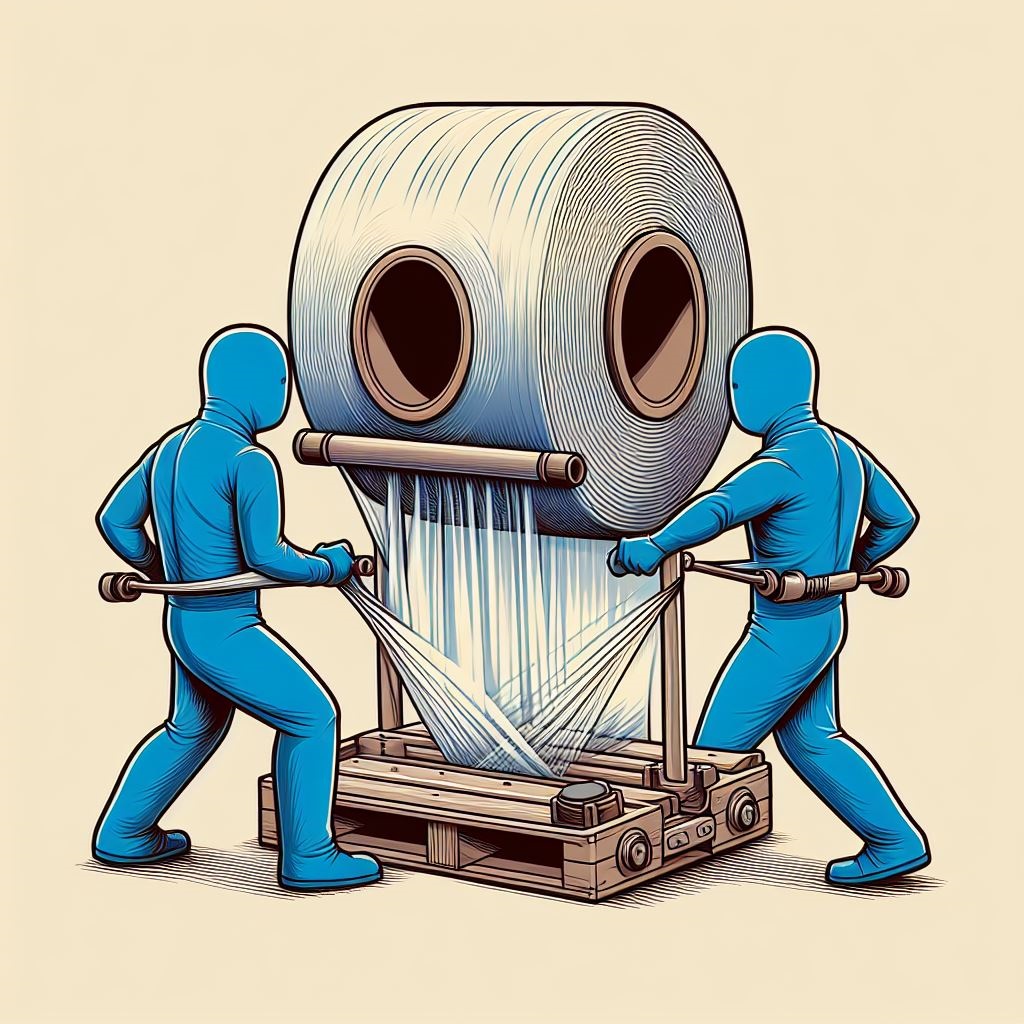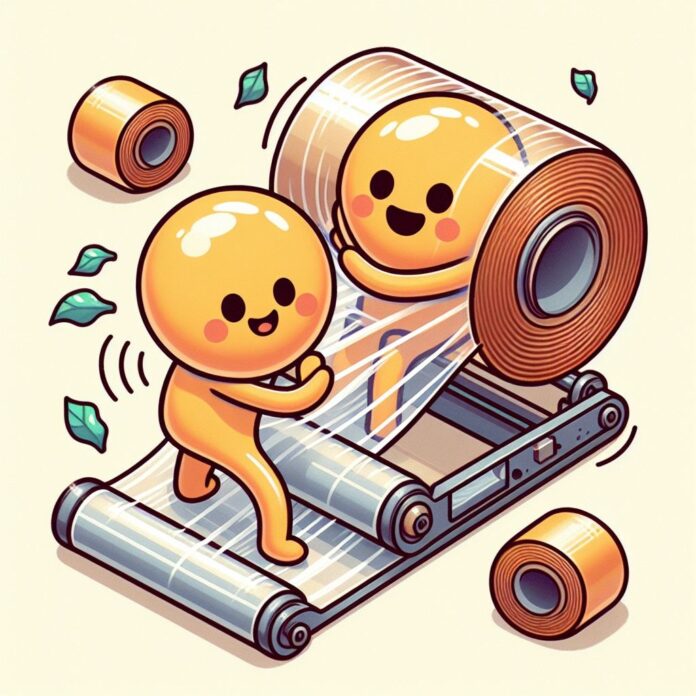If you work in the packaging industry, you’ve likely heard the terms “blown” and “cast” when referring to stretch wrap. But what do these terms mean, and how do you handle a blown cast?
In this article, we’ll explore the differences between blown and cast stretch wrap, the benefits and drawbacks of each, and how to handle a blown cast to ensure your packaging process runs smoothly.
Blown vs Cast Stretch Wrap: What’s the Difference?

Blown and cast stretch wrap are two of the most common types of stretch wrap used in the packaging industry. While they may look similar, they have distinct differences in their manufacturing process and properties.
Blown Stretch Wrap
Blown stretch wrap is made by melting plastic resin and then blowing it through a circular die, creating a bubble of plastic. This bubble is then cooled and flattened, creating a thin sheet of stretch wrap.
The manufacturing process of blown stretch wrap results in a thicker, more durable film with a higher level of cling. This makes it ideal for wrapping irregularly shaped or heavy loads, as it can withstand more punctures and tears.
Cast Stretch Wrap
Cast stretch wrap, on the other hand, is made by melting plastic resin and then feeding it through a flat die onto a chill roll. The chill roll cools the plastic, creating a thin, flat sheet of stretch wrap.
The manufacturing process of cast stretch wrap results in a thinner, clearer film with less cling. This makes it ideal for wrapping uniform loads, as it provides a smooth, consistent wrap without the risk of crushing or damaging the contents.
The Benefits and Drawbacks of Blown and Cast Stretch Wrap
Both blown and cast stretch wrap have their own unique benefits and drawbacks. Understanding these can help you determine which type of stretch wrap is best for your packaging needs.
Blown Stretch Wrap
Benefits:
- Thicker and more durable
- Higher level of cling
- Ideal for irregularly shaped or heavy loads
Drawbacks:
- More expensive
- Can be difficult to stretch
- May leave residue on products
Cast Stretch Wrap
Benefits:
- Thinner and clearer
- Less cling
- Ideal for uniform loads
Drawbacks:
- Less durable
- May not provide enough cling for irregularly shaped or heavy loads
- Can be prone to tearing or puncturing
How to Handle a Blown Cast
While both blown and cast stretch wrap have their own unique benefits, they can both experience issues during the packaging process. One common issue is a blown cast, where the stretch wrap becomes punctured or torn, causing it to lose its effectiveness.
Here are some steps you can take to handle a blown cast and ensure your packaging process runs smoothly:
1. Identify the Cause of the Blown Cast
The first step in handling a blown cast is to identify the cause. This could be due to a variety of factors, such as sharp edges on the load, improper application of the stretch wrap, or a malfunction in the stretch wrap machine.
By identifying the cause, you can take steps to prevent it from happening again in the future.
2. Assess the Damage
Next, assess the damage to the stretch wrap. If the blown cast is small and can be easily repaired, you may be able to salvage the stretch wrap and continue with the packaging process.
However, if the blown casts is large or the stretch wrap is severely damaged, it may be best to discard it and start with a new roll.
3. Repair the Blown Cast
If the blown casts is small and can be easily repaired, you can use a stretch wrap repair tape to patch the hole. This will help maintain the integrity of the stretch wrap and prevent further damage.
4. Adjust the Stretch Wrap Machine
If the blown cast was caused by a malfunction in the stretch wrap machine, it’s important to adjust the machine to prevent it from happening again. This could involve adjusting the tension or speed of the machine, or replacing any worn or damaged parts.
5. Consider Using a Different Type of Stretch Wrap
If you consistently experience blown casts with a certain type of stretch wrap, it may be worth considering switching to a different type. For example, if you primarily use cast stretch wrap but find that it is prone to blowing, you may want to try using blown stretch wrap for heavier or irregularly shaped loads.
Tips for Preventing Blown Casts
While it’s impossible to completely prevent blown casts from happening, there are some steps you can take to minimize the risk:
1. Properly Train Employees
One of the most effective ways to prevent blown casts is to properly train employees on how to use stretch wrap. This includes teaching them how to properly apply the stretch wrap, how to identify potential issues, and how to handle a blown cast if it does occur.
2. Inspect the Load Before Wrapping
Before wrapping a load, it’s important to inspect it for any sharp edges or protruding objects that could puncture the stretch wrap. If any are found, they should be addressed before wrapping to prevent a blown cast.
3. Use the Correct Type of Stretch Wrap
As mentioned earlier, using the correct type of stretch wrap for your specific packaging needs can help prevent blown casts. If you consistently experience blown casts with a certain type of stretch wrap, consider switching to a different type.
4. Regularly Maintain Stretch Wrap Machines
Regular maintenance of stretch wrap machines can help prevent malfunctions that could lead to blown casts. This includes cleaning and inspecting the machine, as well as replacing any worn or damaged parts.
Conclusion
Handling a blown cast is an inevitable part of the packaging process, but by understanding the differences between blown and cast stretch wrap, the benefits and drawbacks of each, and how to handle a blown casts, you can minimize the impact on your packaging operations.
By properly training employees, inspecting loads, using the correct type of stretch wrap, and regularly maintaining stretch wrap machines, you can prevent blown casts and ensure your packaging process runs smoothly.
You may like reading about the following: Media Bzy
